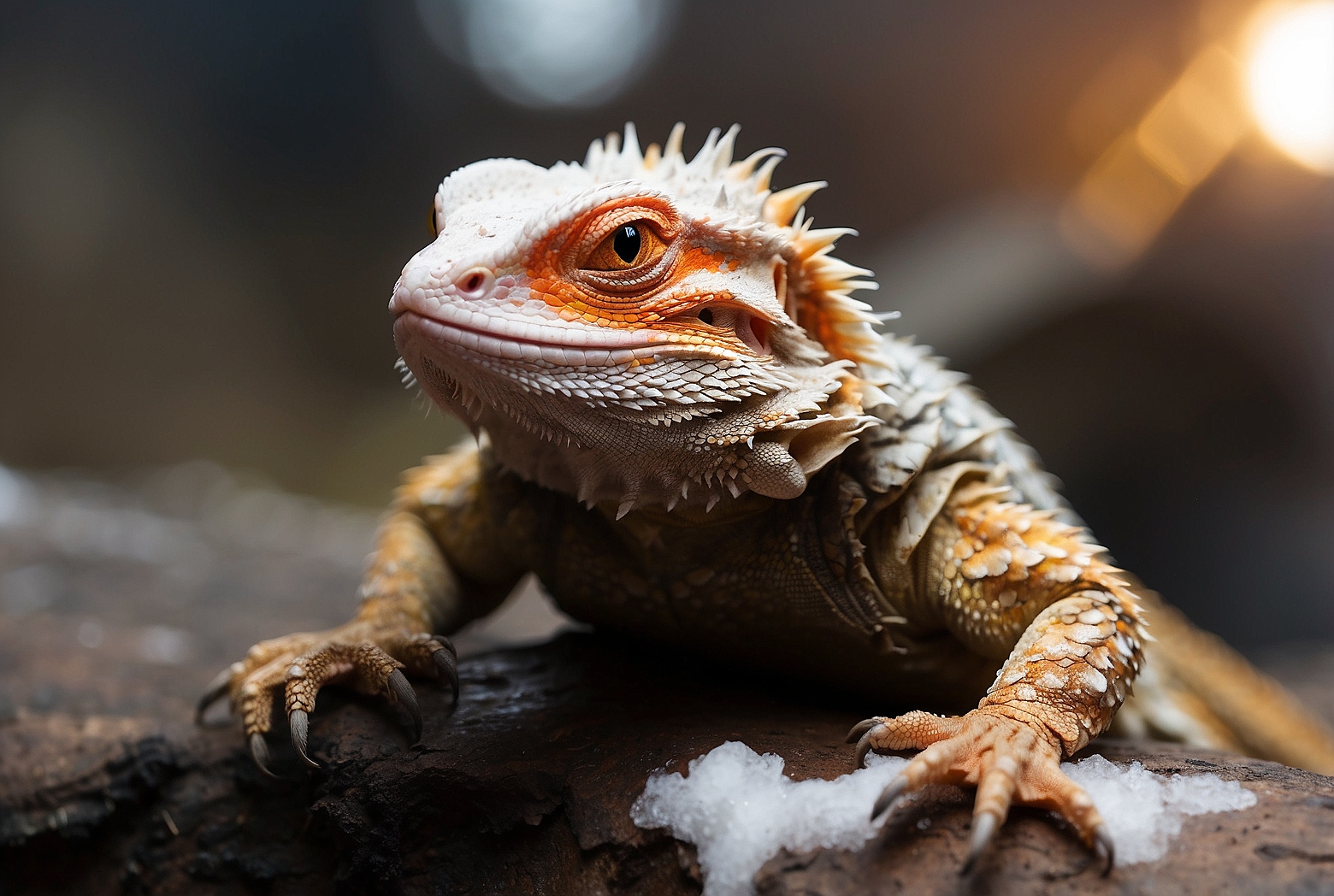Hey there! Ever wondered about the lowest temperature a bearded dragon can be in? It’s important to know how to properly care for these fascinating reptiles to ensure their well-being. Similar to the dalmatian dog breed, bearded dragons require specific environmental conditions to thrive. Let’s explore the ideal temperature range for these unique pets and how to keep them happy and healthy in their habitat.
What’s The Lowest Temperature A Bearded Dragon Can Be In?
Are you a new or experienced bearded dragon owner wondering what the lowest temperature your reptile can withstand? Let’s explore the ideal temperature range for your bearded dragon to ensure their health and well-being.
Understanding Bearded Dragon Temperature Needs
Bearded dragons are ectothermic creatures, meaning they rely on external sources of heat to regulate their body temperature. In their natural habitat of the deserts of Australia, these reptiles are accustomed to basking in the sun to warm up and seeking shade to cool down. As a responsible owner, it’s essential to replicate these temperature gradients in their enclosure to mimic their natural habitat.
Optimal Temperature Range for Bearded Dragons
The optimal temperature range for a bearded dragon is crucial for their overall health and proper functioning. Here’s a breakdown of the ideal temperature range you should maintain in your pet’s habitat:
- Basking Spot: 95-110°F (35-43°C)
- Cool Side: 75-85°F (24-29°C)
- Nighttime Drop: 65-75°F (18-24°C)
By providing a basking spot, a cooler side, and a nighttime temperature drop in your bearded dragon’s enclosure, you’ll create an environment that allows them to thermoregulate effectively.
Effects of Low Temperatures on Bearded Dragons
Bearded dragons are cold-blooded animals, which means they rely on external heat sources to function properly. Exposing your pet to low temperatures can have detrimental effects on their health, such as:
- Slowed metabolism leading to digestive issues
- Respiratory infections
- Weakened immune system
- Inactivity and lethargy
Ensuring that your bearded dragon’s habitat remains within the optimal temperature range will help prevent these issues and keep your pet healthy and happy.
Minimum Temperature Tolerance of Bearded Dragons
While bearded dragons are hardy reptiles, they do have a limit to the low temperatures they can withstand. The minimum temperature a bearded dragon can be in without experiencing adverse effects is around 65°F (18°C).
Exposure to temperatures below this threshold for an extended period can compromise your bearded dragon’s health and lead to serious consequences. It’s crucial to monitor and regulate the temperature in your pet’s enclosure to prevent any harm.
Signs of Cold Stress in Bearded Dragons
As a responsible owner, it’s essential to be vigilant and watch for signs of cold stress in your bearded dragon. Some common indicators that your pet may be experiencing cold stress include:
- Darkening of skin color
- Slowed movement and lethargy
- Reduced appetite
- Stiffness or lack of mobility
If you notice any of these signs, it’s vital to address the temperature issue immediately and ensure your bearded dragon’s environment is within the optimal range to prevent further complications.
Heating Options for Bearded Dragon Enclosures
Maintaining the ideal temperature range in your bearded dragon’s enclosure is essential for their well-being. Here are some heating options you can use to create a comfortable environment for your pet:
Basking Lamps
Basking lamps provide a focused heat source for your bearded dragon to warm up effectively. Make sure to position the lamp over the basking spot to achieve the desired temperature range.
Ceramic Heat Emitters
Ceramic heat emitters are another option to provide constant heat in your pet’s habitat without emitting light. These are ideal for maintaining nighttime temperatures and can help prevent temperature drops that may harm your bearded dragon.
Heat Mats
Heat mats placed under one side of the enclosure can create a warm area for your bearded dragon to bask in. It’s essential to monitor the temperature closely to prevent overheating and ensure your pet’s comfort.
Maintaining Proper Temperature Gradient
Creating a temperature gradient in your bearded dragon’s enclosure is crucial for their thermoregulation. This means providing a range of temperatures, from a warm basking spot to a cooler side, to allow your pet to move freely and regulate their body temperature.
By offering a range of temperatures in the enclosure, your bearded dragon can choose the spot that best suits their needs at any given time. This flexibility is essential for their overall health and well-being.
Monitoring Temperature Levels in Your Bearded Dragon’s Enclosure
Regularly monitoring the temperature levels in your bearded dragon’s enclosure is vital to ensure they are within the optimal range. Here are some tips for effectively monitoring the temperature in your pet’s habitat:
- Use a digital thermometer with probes to accurately measure the temperature at the basking spot and cool side.
- Place the thermometer at the same height as your bearded dragon’s body to get an accurate reading.
- Check the temperature levels multiple times throughout the day to ensure consistency.
By staying vigilant and regularly monitoring the temperature levels in your bearded dragon’s enclosure, you can prevent any drastic fluctuations that may harm your pet.
Conclusion
Maintaining the optimal temperature range in your bearded dragon’s habitat is essential for their health and well-being. By providing a basking spot, a cool side, and a nighttime temperature drop, you’ll create an environment that allows your pet to thrive.
Remember, the lowest temperature a bearded dragon can be in without adverse effects is around 65°F (18°C). Monitoring the temperature levels, recognizing signs of cold stress, and providing heating options are crucial steps in ensuring the comfort and health of your beloved reptile. By following these guidelines, you’ll create a safe and comfortable environment for your bearded dragon to flourish.
